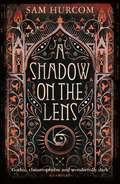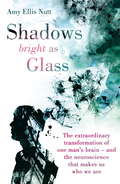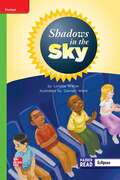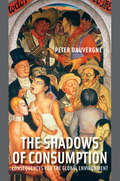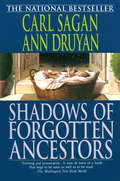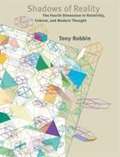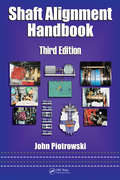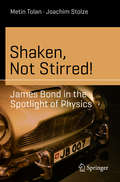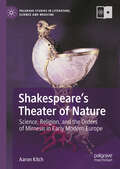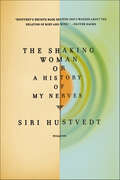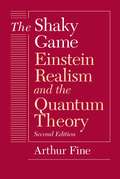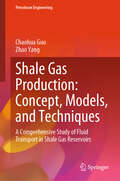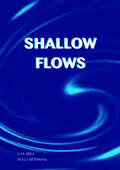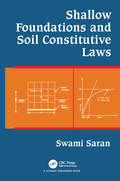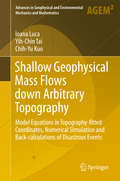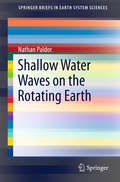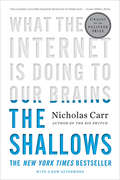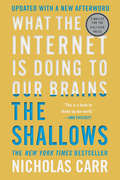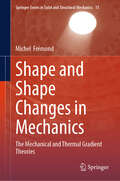- Table View
- List View
A Shadow on the Lens: The most Gothic, claustrophobic, wonderfully dark thriller to grip you this year
by Sam Hurcom'Gothic, claustrophobic and wonderfully dark' GUARDIAN1904. Thomas Bexley, one of the first forensic photographers, is called to the sleepy Welsh village of Dinas Powys. A yound girl by the name of Betsan Tilny has been found murdered in the woodland. But the crime scene appears staged and worse still: the locals are reluctant to help.One night, he develops the crime scene photographs in the cellar of his lodgings. There, he finds a face dimly visible in the photographs - the shadowed spectre of Betsan Tilny.In the days that follow, Thomas senses a growing presence watching him as he tries to uncover what the villagers of Dinas Powys are so intent on keeping secret...The stifling, atmospheric, gothic crime novel following one of the world's first forensic photographers and featuring a killer twist - perfect for fans of The Woman in Black, The Silent Companions, and Little Strangers.****************Praise for A Shadow on the Lens:'An intriguing debut' THE TIMES'A promising debut - gothic, claustrophobic and wonderfully dark' GUARDIAN'A sparkling debut from a name to watch...You might as well be in another world. This is top notch historical crime fiction, with a dash of the supernatural. A gorgeous book and a riveting tale' David Young
A Shadow on the Lens: The most Gothic, claustrophobic, wonderfully dark thriller to grip you this year
by Sam Hurcom'Gothic, claustrophobic and wonderfully dark' GUARDIAN1904. Thomas Bexley, one of the first forensic photographers, is called to the sleepy Welsh village of Dinas Powys. A yound girl by the name of Betsan Tilny has been found murdered in the woodland. But the crime scene appears staged and worse still: the locals are reluctant to help.One night, he develops the crime scene photographs in the cellar of his lodgings. There, he finds a face dimly visible in the photographs - the shadowed spectre of Betsan Tilny.In the days that follow, Thomas senses a growing presence watching him as he tries to uncover what the villagers of Dinas Powys are so intent on keeping secret...The stifling, atmospheric, gothic crime novel following one of the world's first forensic photographers and featuring a killer twist - perfect for fans of The Woman in Black, The Silent Companions, and Little Strangers.****************Praise for A Shadow on the Lens:'An intriguing debut' THE TIMES'A promising debut - gothic, claustrophobic and wonderfully dark' GUARDIAN'A sparkling debut from a name to watch...You might as well be in another world. This is top notch historical crime fiction, with a dash of the supernatural. A gorgeous book and a riveting tale' David Young
Shadows
by Roberto CasatiIn this original, wide-ranging, and endlessly thought-provoking work of popular nonfiction, a leading science writer uncovers the pervasive presence of shadows in our world.For Plato, shadows were the symbol of our limitations. For Galileo, they knocked the Earth from the center of the cosmos. They are a source of fear and a symbol of ignorance, and they loom large in art and design, mythology and folklore, physics and metaphysics, and architecture and urban planning. From shadows puppets and the psychology of shadows to the role of shadows in astronomy and the influence of shadows on the architectural profiles of our cities, Roberto Casati awakens our fascination in this tour-de-force of investigation and imagination.From the Trade Paperback edition.
Shadows Bright as Glass
by Amy E NuttOn a sunny fall afternoon in 1988, Jon Sarkin was playing golf when, without a whisper of warning, his life changed forever. As he bent down to pick up his golf ball, something strange and massive happened inside his head; part of his brain seemed to unhinge, to split apart and float away. For an utterly inexplicable reason, a tiny blood vessel, thin as a thread, deep inside the folds of his gray matter had suddenly shifted ever so slightly, rubbing up against his acoustic nerve. Any noise now caused him excruciating pain. After months of seeking treatment to no avail, in desperation Sarkin resorted to radical deep-brain surgery, which seemed to go well until during recovery his brain began to bleed and he suffered a major stroke. When he awoke, he was a different man. Before the stroke, he was a calm, disciplined chiropractor, a happily married husband and father of a newborn son. Now he was transformed into a volatile and wildly exuberant obsessive, seized by a manic desire to create art, devoting virtually all his waking hours to furiously drawing, painting, and writing poems and letters to himself, strangely detached from his wife and child, and unable to return to his normal working life. His sense of self had been shattered, his intellect intact but his way of being drastically altered. His art became a relentless quest for the right words and pictures to unlock the secrets of how to live this strange new life. And what was even stranger was that he remembered his former self. In a beautifully crafted narrative, award-winning journalist and Pulitzer Prize finalist Amy Ellis Nutt interweaves Sarkin's remarkable story with a fascinating tour of the history of and latest findings in neuroscience and evolution that illuminate how the brain produces, from its web of billions of neurons and chaos of liquid electrical pulses, the richness of human experience that makes us who we are. Nutt brings vividly to life pivotal moments of discovery in neuroscience, from the shocking "rebirth" of a young girl hanged in 1650 to the first autopsy of an autistic savant's brain, and the extraordinary true stories of people whose personalities and cognitive abilities were dramatically altered by brain trauma, often in shocking ways. Probing recent revelations about the workings of creativity in the brain and the role of art in the evolution of human intelligence, she reveals how Jon Sarkin's obsessive need to create mirrors the earliest function of art in the brain. Introducing major findings about how our sense of self transcends the bounds of our own bodies, she explores how it is that the brain generates an individual "self" and how, if damage to our brains can so alter who we are, we can nonetheless be said to have a soul. For Jon Sarkin, with his personality and sense of self permanently altered, making art became his bridge back to life, a means of reassembling from the shards of his former self a new man who could rejoin his family and fashion a viable life. He is now an acclaimed artist who exhibits at some of the country's most prestigious venues, as well as a devoted husband to his wife, Kim, and father to their three children. At once wrenching and inspiring, this is a story of the remarkable human capacity to overcome the most daunting obstacles and of the extraordinary workings of the human mind.
Shadows Bright As Glass: The Extraordinary Transformation of One Man's Brain - and the Neuroscience that Makes Us Who We Are
by Amy Ellis NuttFrom Pulitzer-Prize-finalist Amy Ellis Nutt, comes the moving and inspiring story of Jon Sarkin. Sarkin's personality dramatically changed after he underwent experimental brain surgery and suffered a massive stroke. Remarkably, he could still remember his old self. Yet, once an ordinary family man, he suddenly found himself compelled to make art, always feverishly creating and only existing in the present. He has since gone on to become an acclaimed artist. Sarkin's story is beautifully interspersed with fascinating nuggets of history about man's struggle to understand the brain and the fragile nature of identity.
The Shadows of Consumption: Consequences for the Global Environment (The\mit Press Ser.)
by Peter DauvergneAn environmentalist maps the hidden costs of overconsumption in a globalized world by tracing the environmental consequences of five commodities.The Shadows of Consumption gives a hard-hitting diagnosis: many of the earth's ecosystems and billions of its people are at risk from the consequences of rising consumption. Products ranging from cars to hamburgers offer conveniences and pleasures; but, as Peter Dauvergne makes clear, global political and economic processes displace the real costs of consumer goods into distant ecosystems, communities, and timelines, tipping into crisis people and places without the power to resist. In The Shadows of Consumption, Peter Dauvergne maps the costs of consumption that remain hidden in the shadows cast by globalized corporations, trade, and finance. Dauvergne traces the environmental consequences of five commodities: automobiles, gasoline, refrigerators, beef, and harp seals. In these fascinating histories we learn, for example, that American officials ignored warnings about the dangers of lead in gasoline in the 1920s; why China is now a leading producer of CFC-free refrigerators; and how activists were able to stop Canada's commercial seal hunt in the 1980s (but are unable to do so now). Dauvergne's innovative analysis allows us to see why so many efforts to manage the global environment are failing even as environmentalism is slowly strengthening. He proposes a guiding principle of “balanced consumption” for both consumers and corporations. We know that we can make things better by driving a high-mileage car, eating locally grown food, and buying energy-efficient appliances; but these improvements are incremental, local, and insufficient. More crucial than our individual efforts to reuse and recycle will be reforms in the global political economy to reduce the inequalities of consumption and correct the imbalance between growing economies and environmental sustainability.
Shadows of Forgotten Ancestors
by Carl Sagan Ann Druyan"Dazzling...A feast. Absorbing and elegantly written, it tells of theorigins of life on earth, describes its variety and charaacter, and culminates in a discussion of human nature and teh complex traces ofhumankind's evolutionary past...It is an amazing story masterfully told."FINANCIAL TIMES (LONDON)World renowned scientist Carl Sagan and acclaimed author Ann Druyan have written a ROOTS for the human species, a lucid and riveting account of how humans got to be the way we are. It shows with humor and drama that many of our key traits--self-awareness, technology, family ties, submission to authority, hatred for those a little different from ourselves, reason, and ethics--are rooted in the deep past, and illuminated by our kinship with other animals. Astonishing in its scope, brilliant in its insights, and an absolutely compelling read, SHADOWS OF FORGOTTEN ANCESTORS is a triumph of popular science.From the Trade Paperback edition.
Shadows of Reality: The Fourth Dimension in Relativity, Cubism, and Modern Thought
by Tony RobbinIn this insightful book, which is a revisionist math history as well as a revisionist art history, Tony Robbin, well known for his innovative computer visualizations of hyperspace, investigates different models of the fourth dimension and how these are applied in art and physics. Robbin explores the distinction between the slicing, or Flatland, model and the projection, or shadow, model. He compares the history of these two models and their uses and misuses in popular discussions. Robbin breaks new ground with his original argument that Picasso used the projection model to invent cubism, and that Minkowski had four-dimensional projective geometry in mind when he structured special relativity. The discussion is brought to the present with an exposition of the projection model in the most creative ideas about space in contemporary mathematics such as twisters, quasicrystals, and quantum topology. Robbin clarifies these esoteric concepts with understandable drawings and diagrams. Robbin proposes that the powerful role of projective geometry in the development of current mathematical ideas has been long overlooked and that our attachment to the slicing model is essentially a conceptual block that hinders progress in understanding contemporary models of spacetime. He offers a fascinating review of how projective ideas are the source of some of today's most exciting developments in art, math, physics, and computer visualization.
Shaft Alignment Handbook (Mechanical Engineering)
by John PiotrowskiRotating machinery is the heart of many industrial operations, but many engineers and technicians perform shaft alignment by guesswork or with limited knowledge of the tools and methods available to accurately and effectively align their machinery. Two decades ago, John Piotrowski conferred upon the field an unprecedented tool: the first edition of
Shaken, Not Stirred!: James Bond in the Spotlight of Physics (Science and Fiction)
by Joachim Stolze Metin TolanHow do James Bond’s X-ray glasses work, the ones he uses to see whether the lady at the roulette table has a pistol concealed in her underwear? Is it really possible to launch oneself into the air and catch up with a plane that is free-falling towards the earth? Or to shoot down a helicopter with a pistol? In this lively and informative book, Germany's boldest physics professor Metin Tolan analyses the stunts and gadgets of the 007 films and even answers the question of all questions: Why does Bond drink his vodka martini shaken, not stirred? "So much entertaining science is a rare thing." Spiegel Online
Shakespeare on the Ecological Surface (Spotlight on Shakespeare)
by Liz Oakley-BrownShakespeare on the Ecological Surface uses the concept of the ‘surface’ to examine the relationship between contemporary performance and ecocriticism. Each section looks, in turn, at the 'surfaces' of slick, smoke, sky, steam, soil, slime, snail, silk, skin and stage to build connections between ecocriticism, activism, critical theory, Shakespeare and performance. While the word ‘surface’ was never used in Shakespeare’s works, Liz Oakley-Brown shows how thinking about Shakespearean surfaces helps readers explore the politics of Elizabethan and Jacobean culture. She also draws surprising parallels with our current political and ecological concerns. The book explores how Shakespeare uses ecological surfaces to help understand other types of surfaces in his plays and poems: characters’ public-facing selves; contact zones between characters and the natural world; surfaces upon which words are written; and physical surfaces upon which plays are staged. This book will be an illuminating read for anyone studying Shakespeare, early modern culture, ecocriticism, performance and activism.
Shakespearean Sensations
by Katharine A. Craik Tanya PollardThis strong and timely collection provides fresh insights into how Shakespeare's plays and poems were understood to affect bodies, minds and emotions. Contemporary criticism has had surprisingly little to say about the early modern period's investment in imagining literature's impact on feeling. Shakespearean Sensations brings together scholarship from a range of well-known and new voices to address this fundamental gap. The book includes a comprehensive introduction by Katharine A. Craik and Tanya Pollard and comprises three sections focusing on sensations aroused in the plays; sensations evoked in the playhouse; and sensations found in the imaginative space of the poems. With dedicated essays on Hamlet, Macbeth, Othello and Twelfth Night, the collection explores how seriously early modern writers took their relationship with their audiences and reveals new connections between early modern literary texts and the emotional and physiological experiences of theatregoers.
Shakespeare’s Theater of Nature: Science, Religion, and the Orders of Mimesis in Early Modern Europe (Palgrave Studies in Literature, Science and Medicine)
by Aaron KitchShakespeare’s Theater of Nature argues that Shakespeare combined art and nature in new ways while experimenting with relations between words, images, and objects as sources of knowledge and pleasure. Shakespeare’s re-centering of nature as a source of theatrical representation in a range of plays follows debates in natural philosophy and theology about how to understand divinity in and through the order of nature (ordo creationis). Early chapters analyze early modern reframing of nature by printed books of botany, cosmology, and history—as well Tudor interludes that center nature as a subject—while later chapters offer readings of eight plays by Shakespeare that draw on classical, medieval, and early modern debates in natural philosophy and theology to create new modes of dramatic mimesis.
The Shaking Woman, or A History of My Nerves
by Siri HustvedtThe author delves into the mysteries of her own neurological condition in a far-ranging memoir that is “graceful, intense, and curiously affirming” (Booklist).While speaking at a memorial event for her father in 2006, novelist Siri Hustvedt suffered a violent seizure from the neck down. Despite her flapping arms and shaking legs, she continued to speak clearly and was able to finish her speech. It was as if she had suddenly become two people: a calm orator and a shuddering wreck. Then the seizures happened again and again.The Shaking Woman or A History of My Nerves tracks Hustvedt’s search for a diagnosis, one that takes her inside the thought processes of several scientific disciplines, each one of which offers a distinct perspective on her paroxysms but no ready solution. In the process, she finds herself entangled in fundamental questions: What is the relationship between brain and mind? How do we remember? What is the self?In The Shaking Woman, Hustvedt synthesizes her experience and research into a compelling mystery: Who is the shaking woman? In the end, the story she tells becomes, in the words of George Makari, author of Revolution in Mind, “a brilliant illumination for us all.”
The Shaky Game: Einstein Realisn and the Quantum Theory
by Arthur FineIn this new edition, Arthur Fine looks at Einstein's philosophy of science and develops his own views on realism. A new Afterword discusses the reaction to Fine's own theory. "What really led Einstein . . . to renounce the new quantum order? For those interested in this question, this book is compulsory reading."—Harvey R. Brown, American Journal of Physics "Fine has successfully combined a historical account of Einstein's philosophical views on quantum mechanics and a discussion of some of the philosophical problems associated with the interpretation of quantum theory with a discussion of some of the contemporary questions concerning realism and antirealism. . . . Clear, thoughtful, [and] well-written."—Allan Franklin, Annals of Science "Attempts, from Einstein's published works and unpublished correspondence, to piece together a coherent picture of 'Einstein realism.' Especially illuminating are the letters between Einstein and fellow realist Schrödinger, as the latter was composing his famous 'Schrödinger-Cat' paper."—Nick Herbert, New Scientist "Beautifully clear. . . . Fine's analysis is penetrating, his own results original and important. . . . The book is a splendid combination of new ways to think about quantum mechanics, about realism, and about Einstein's views of both."—Nancy Cartwright, Isis
Shale Gas Production: A Comprehensive Study of Fluid Transport in Shale Gas Reservoirs (Petroleum Engineering)
by Chaohua Guo Zhao YangThis book is a comprehensive overview of shale gas science and engineering, covering key facets such as the geological and geochemical characteristics of shale gas reservoirs, gas transport mechanisms in shale nanopores, mathematical models and case studies for gas production, and enhancing gas recovery methods. The author presents a systematic summarization of gas flow and production in shale gas reservoirs from micropore to macro-reservoir scale. The research methods encompass experiments, well-testing, numerical simulation, and mathematical derivation. Designed primarily as a reference work for petroleum industry practitioners and researchers, this book is equally valuable for new entrants and seasoned professionals. It is also an excellent resource for undergraduate and postgraduate courses and of interest to libraries at universities offering gas, oil, and general energy courses. Whether you're seeking an introduction to the field or a detailed exploration of advanced concepts, this book provides a valuable and complete guide to shale gas science and engineering.
Shallow Flows: Research Presented at the International Symposium on Shallow Flows, Delft, Netherlands, 2003
by Gerhard H. Jirka Wim S.J. UijttewaalThis text presents the key findings of the International Symposium held in Delft in 2003, which explored the process of shallow flows. Shallow flows are found in lowland rivers, lakes, estuaries, bays, coastal areas and in density-stratified atmospheres, and may be observed in puddles, as in oceans. They impact on the life and work of a wide variety of readers, who are here provided with a clear overview of the subject. Shallow flows are intrinsically turbulent. On one hand, there are strongly three-dimensional, small-scale turbulent motions and on the other hand, large-scale quasi-two-dimensional turbulence. This book explains and examines these differences and their effects with sections on transport processes in shallow flows; shallow jets, wakes and mixing layers; stratified and rotating flows in ocean and atmosphere; river and channel flows; and numerical modelling and turbulence closure techniques. The reader is provided with the pick of current studies and a fresh approach to the subject, with expert examination of a fascinating and crucial phenomenon of our world's water systems.
Shallow Foundations and Soil Constitutive Laws
by Swami SaranThe book offers a systematic analysis of footings (i.e. shallow foundations) in a realistic way, using constitutive relationships of the soil. The aim of the book is to deal with the theme holistically, involving the determination of the constitutive law of the soil, and then proportioning the footing occurring in different situations in actual practice. The book has eleven chapters. After giving an introduction and scope of the book in the first chapter, second and third chapters are respectively devoted to constitutive laws of soil and basic stress equations. In the third chapter analysis of strip footings subjected to central vertical load has been dealt. This analysis has been extended for eccentric –inclined load in the fifth chapter. Since problems of shallow foundations resting adjacent to a slope are of prime importance, this aspect has been dealt in sixth chapter. In the seventh chapter, analysis pertaining to square and rectangular footings have been presented. Effect of interference between adjacent footing is covered in chapter eight. Since ring footings are usually provided for tanks, silos, towers etc., ninth chapter is devoted to this. Added attraction of the book is its chapter ten in which footings located in seismic regions have been covered. Effect of embedment below the ground surface on the behavior of footings located both in non-seismic and seismic regions has been dealt in the chapter eleven. The book is intended for senior undergraduate, postgraduate and Ph.D. students of civil engineering, research scholars, practicing engineers, teachers and academicians. The analyses are based on the latest information available. A number of illustrated examples have been included in the text. SI units have been used in the book.
Shallow Geophysical Mass Flows down Arbitrary Topography
by Ioana Luca Yih-Chin Tai Chih-Yu KuoGeophysical mass flows, such as landslides, avalanches or debris flows, are frequent mass movement processes in mountain areas and often cause disastrous damage. This book lays a foundation for formulating the depth-averaged equations describing the shallow geophysical mass flows over non-trivial topography. It consists of the detailed derivation of the model equations. The stimulating numerical examples demonstrate how the proposed models are applied. All this make this book accessible to a wide variety of readers, especially senior undergraduate and graduate students of fluid mechanics, civil engineering, applied mathematics, engineering geology, geophysics or engineers who are responsible for hazard management.
Shallow Water Waves on the Rotating Earth
by Nathan PaldorThis book describes new theoretical advances concerning analytical solutions of the Rotating Shallow Water Equations, which will make it of great interest to graduate students and scientists in the fields of Geophysical Fluid Dynamics, Physical Oceanography, Dynamical Meteorology and Applied Mathematics. The new dispersion relations and meridional amplitude variations of waves derived in this book can be applied to observations in the atmosphere and ocean and also provide alternatives to the Spherical Harmonics basis of global-scale spectral numerical models.
The Shallows: What The Internet Is Doing To Our Brains
by Nicholas CarrFinalist for the 2011 Pulitzer Prize in General Nonfiction: “Nicholas Carr has written a Silent Spring for the literary mind.”—Michael Agger, Slate “Is Google making us stupid?” When Nicholas Carr posed that question, in a celebrated Atlantic Monthly cover story, he tapped into a well of anxiety about how the Internet is changing us. He also crystallized one of the most important debates of our time: As we enjoy the Net’s bounties, are we sacrificing our ability to read and think deeply? Now, Carr expands his argument into the most compelling exploration of the Internet’s intellectual and cultural consequences yet published. As he describes how human thought has been shaped through the centuries by “tools of the mind”—from the alphabet to maps, to the printing press, the clock, and the computer—Carr interweaves a fascinating account of recent discoveries in neuroscience by such pioneers as Michael Merzenich and Eric Kandel. Our brains, the historical and scientific evidence reveals, change in response to our experiences. The technologies we use to find, store, and share information can literally reroute our neural pathways. Building on the insights of thinkers from Plato to McLuhan, Carr makes a convincing case that every information technology carries an intellectual ethic—a set of assumptions about the nature of knowledge and intelligence. He explains how the printed book served to focus our attention, promoting deep and creative thought. In stark contrast, the Internet encourages the rapid, distracted sampling of small bits of information from many sources. Its ethic is that of the industrialist, an ethic of speed and efficiency, of optimized production and consumption—and now the Net is remaking us in its own image. We are becoming ever more adept at scanning and skimming, but what we are losing is our capacity for concentration, contemplation, and reflection. Part intellectual history, part popular science, and part cultural criticism, The Shallows sparkles with memorable vignettes—Friedrich Nietzsche wrestling with a typewriter, Sigmund Freud dissecting the brains of sea creatures, Nathaniel Hawthorne contemplating the thunderous approach of a steam locomotive—even as it plumbs profound questions about the state of our modern psyche. This is a book that will forever alter the way we think about media and our minds.
The Shallows: What The Internet Is Doing To Our Brains
by Nicholas CarrNew York Times bestseller • Finalist for the Pulitzer Prize “This is a book to shake up the world.” —Ann Patchett Nicholas Carr’s bestseller The Shallows has become a foundational book in one of the most important debates of our time: As we enjoy the internet’s bounties, are we sacrificing our ability to read and think deeply? This 10th-anniversary edition includes a new afterword that brings the story up to date, with a deep examination of the cognitive and behavioral effects of smartphones and social media.
Shanidar, the First Flower People
by Ralph S. SoleckiAn archaeological study conducted from 1951-1960 of the Neanderthal burials found at Shanidar cave in Iraq.
Shape and Shape Changes in Mechanics: The Mechanical and Thermal Gradient Theories (Springer Series in Solid and Structural Mechanics #15)
by Michel FrémondThis book provides an innovative description of motion with large deformations and the possibility of defects and dislocations. The theory is based on the stretch and angular matrices of the polar decomposition allowing convex potentials. Third-order gradient theories are required to account for mechanical everyday experiments, for instance assemblies of solid structures with different spatial dimensions. Second-order gradient theories are required for thermal experiments. Using the principle of virtual power and new convex potentials, the position of either solid or fluid structures together with the matrix accounting for the defects and dislocations is computed. Defects and dislocations are present in case an internal stress is large enough. Engineers and scientists active in solid and fluid engineering, mathematics, and numerics should be aware of this predictive theory. Damage, shape memory alloys, Cosserat materials, and surface tension are investigated in this framework.
